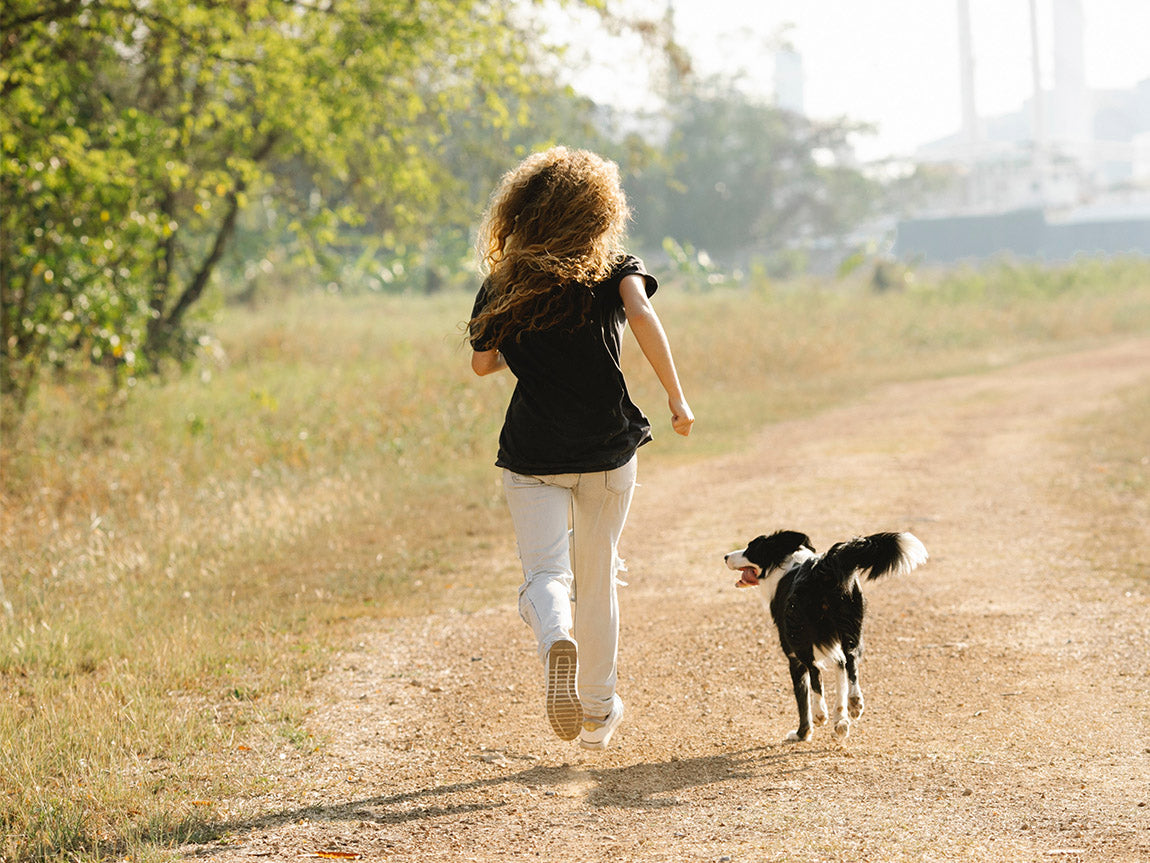Parkour for Dogs
Looking for a fun new idea for quality time with your pooch this winter? Try parkour for dogs. Also known as urban agility, it's a great way to engage with your canine friend. He gets to use his brain as well as his muscles, and walks will become so much more rewarding for you both.
If your dog is less than reliable off lead, you can have him fitted with a handy dog GPS tracker so that you can find him even if he gets carried away and disappears out of sight. That way you can relax while you both enjoy walks like never before.

Emmi the Finnish Lapphund doing parkour. Photo by Jane Treasure
What is Dog Parkour?
You might have seen those athletic young guys who jump like daredevils across adjacent roofs or run up walls and then somersault back to the ground. Their sport is called parkour, and there's a doggy version too. It's all about climbing, jumping over, crawling under and otherwise engaging with normal obstacles you come across in your daily life.
Think of it like the other popular doggy sport, agility, but without the need for complicated equipment.
Just take your normal walk and turn it into an adventure expedition for your dog using all the standard things around you that you normally don't even notice. If you're having a woodland walk, then there will be lots of rocks to balance on, logs to crawl under and maybe a stream to jump. If you're in the city, then you can use street bins, light poles, benches or even the curb. In your own back garden you can set up obstacles or just use your fence or steps.
Parkour is a sport for all seasons and will help to keep you warm on those chilly winter days out with your dog. Literally any walk can be a parkour walk.
Benefits of Parkour
Time that you spend training your dog is always time well spent. It's a wonderful bonding exercise for you and your best friend. In addition to strengthening the connection between you, parkour has a number of additional benefits.
- It's fun. Your walks need never be boring again – for either of you.
- Improves focus. Making training a fun game for your dog will improve his attentiveness to you and make it easier to train a reliable recall as well. In the meantime, a dog tracker will make sure you can find him if he does get distracted and runs off.
- Great exercise. This is a really easy way to exercise even the laziest dog, and he will use muscles he's never used before. You can even find gentle targets for a dog who is ill, old or recuperating by using, say, coloured mats to target, a high obstacle he can walk under comfortably or a simple nose-touch to a tree.
- Exercises the brain. Your dog's brain gets an outstanding workout through the training and activities. That means he will be much more relaxed and content for the rest of the day.
- Do it anywhere. This is a sport that is equally suited to town or country life. The only thing that will change is the type of obstacle you'll be working with.
- Helps insecure dogs. You will find that even your timid, fearful or reactive dog will respond to the benefits of this doggy sport. Giving them something constructive to concentrate on will also distract them from their worries and give them confidence.

Getting Started in Parkour for Dogs
Parkour is easy to do – you're only limited by your own imagination. But if you're not confident in training your dog for these kinds of tricks, then there are plenty of online resources to get you started.
The International Dog Parkour Association runs training for participants, instructors and evaluators alike. It's not a competitive sport, as such, but once you get bitten by the parkour bug, there is a structure of titles you and your dog can work through.
In this sport, with a bit of effort and a lot of fun, even your dog can become a champion!
![]()
Things to Keep in Mind
Depending on the choices you make when planning your walks, parkour can be as athletic or as low-impact as you like. Here are some points to make sure you both get the best out of your new sport.
- Puppies below the age of one year shouldn't do much in the way of jumping or climbing, so keep it low-impact until they are physically mature.
- Start with small, easier tasks and work your way up to more demanding exercises over time.
- Elderly dogs, or those with physical problems like arthritis, should also keep to easy routines with all four paws on the ground.
- Consider safety for both you and your dog when asking him to climb anything. Make sure the obstacle is strong enough to hold him and that it's secure and won't wobble or fall over.
If your dog is likely to run off when not on lead, then this training will help. But you'll be able to relax about his location by using a GPS for dogs like the one from Safer Pet. It tracks his movements in real time so you always know where he is, leaving you to concentrate on having fun.
